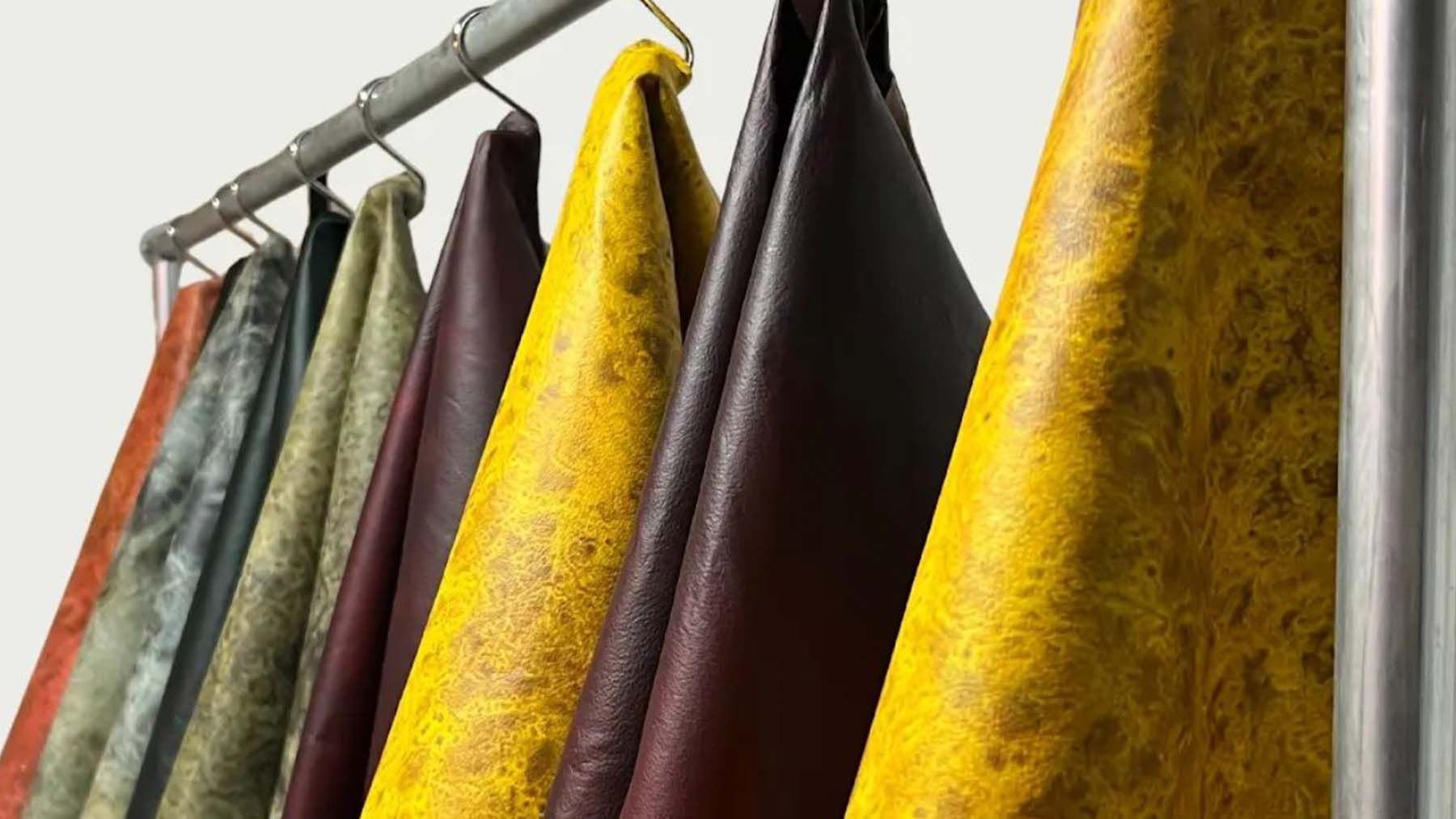
Ten years ago, Suzanne Lee gathered a nerdy group of synthetic biologists, designers and artists in a sterile conference room in Microsoft’s New York headquarters to discuss an audacious shared vision: a fashion industry transformed by “biofabricated” materials like lab-grown leathers and new mushroom-based fabrics.
They showed each other janky samples cultivated in Petri dishes and outlined wildly optimistic plans to bring these lab experiments to market.
Breakthroughs in biotechnology, they argued, meant materials produced by living cells and microorganisms like algae, bacteria and mycelium could one day displace leather from polluting factory farms or fossil-fuel-based polyester. Over the next few years, buzzy start-ups attracted billions of dollars from brands and venture funds, eager to tap into anticipated consumer interest in sustainable products and address increasing government scrutiny of fashion’s climate impact.
Yet a decade on, progress has been slow and precarious. Many companies have pivoted away from the high-cost, high-tech challenges involved in developing cell-cultivated leather. Other buzzy new materials have yet to make it into products or beyond small capsule collections, even as production of some biofabricated material has begun to reach scale. A series of high-profile failures over the last year has further dampened the hype around the space.
But while the sector has been dealt a hefty reality check, once-nascent technologies are finally beginning to reach maturity and scale, and toughening sustainability regulations have drawn interest from the industry’s biggest players. Last week, Lee’s consultancy Biofabricate hosted its latest summit in Paris sponsored by French luxury giant Kering.
“Ten years ago people were promising ridiculous timelines for material innovation and it burned a lot of relationships,” said Lee. “We’ve gone through waves of hype and adjustment, but the opportunity is still there if you get it right.”
Here’s what to watch in the coming year.
The Reality Check Isn’t Over Yet
It’s been a brutal year, as a broader pull-back in venture investing collided with a series of specific mis-steps at new materials companies.
In July, Bolt Threads, a buzzy start-up whose mushroom-based leather alternative attracted interest from companies including Stella McCartney, Adidas and Kering, announced it was halting production of its fungi-forged fabric after struggling to raise new funds. In August, biotech firm Amyris filed for bankruptcy, unable to consistently leverage its bioengineered beauty ingredients into successful brands.
The market remains nervous, with new materials that are beginning to reach industrial scale yet to show real market traction. The challenge for the year ahead is whether start-ups can show they are effectively executing on scale-up plans.
“We are not out of the woods; we are definitely going to see more failures,” said Lee. “But there’s more momentum than there’s ever been; EU regulation is driving quite a lot. There’s such an impetus to find alternatives to petrochemicals.”
There are signs big companies are continuing to invest and remain interested as innovations move from pilot projects to commercial scale. Last week, Kering announced an investment in Sqim, an Italian biomaterials start-up that’s developed a mushroom-derived leather alternative. “A few years ago, I was not a believer that mushrooms could make it,” the French luxury group’s sustainability programme director, Géraldine Vallejo, admitted. But she came around after seeing the results of a collaboration between Balenciaga and Sqim in 2022.
Elsewhere, Kering rival LVMH backed a “sustainable market” of material innovations hosted by Stella McCartney at the UN’s COP climate summit in December.
“Just a couple of years ago, I was really worried that a lot of these innovative new materials start-ups wouldn’t make it to a stage where they could start to provide a commercially viable product that could be scaled up,” Nicolaj Reffstrupp, co-founder of Danish fashion brand Ganni and investment fund Look Up Ventures, told the Biofabricate summit. “[Now] we’re starting to see that… that’s definitely a huge change.”
Scale Is Vital, But It’s Just Step One
In November, biomaterial business MycoWorks harvested the first sheets of material from its new commercial-scale plant in South Carolina, USA. It’s a major milestone for the company, whose mycelium-based leather alternative attracted interest from brands including Hermès while still in pilot phase.
Other innovations have also moved to commercial scale. Spiber, a Japanese company that recreates materials like silk, wool and cashmere using genetically engineered microbes to “brew” protein polymers opened its first industrial scale plant in 2022. Polybion, a Mexican company that grows a leather-like material by feeding bacteria fruit waste, is targeting 1.1 million square feet of production once it hits full capacity at its current facility.
“In 2023, this field matured from hype to reality,” said MycoWorks chief executive officer Matt Scullin.
But moving from early commercial production to real market traction remains a long-term project in an increasingly challenging and competitive sector. Though no longer mere pilots, the volumes of new materials available to the market remain minimal and manufacturers and brands will take time to understand whether and how to work with new innovations.
The infrastructure to support this process must evolve alongside the materials themselves, with new innovations requiring the industry to develop new ways of working.
For instance Ganni, which committed to phasing out virgin leather by the end of 2023, set up a dedicated team to work with new materials. The company consistently trials around 30 innovations at a time, providing feedback on requirements to bring the material to market and a potential path to offtake agreements. Meanwhile, the brand has baked achieving its climate commitments into design decisions.
“We’re a fashion company but we run like a tech company,” said Reffstrup. “It was somewhat baked into our DNA that we were comfortable navigating chaos and failure and change.”
But most fashion brands have not historically engaged in research and development, and connecting the work sustainability and venture teams do to brands’ design and sourcing divisions is typically clunky.
“It’s very often not the tech that makes things go off the rails,” Marcus Remmers, a partner at investment firm Novo Holdings, said during the Biofabricate summit. “People underestimate the complexity of the value chain they have to fit into.”
‘It Starts With a Great Product’
A big challenge for new materials as they look to enter the market is that they must compete with tried-and-tested products on price, performance and aesthetics, while the scientific and sustainability credentials that may make them groundbreaking technologies are unlikely to resonate with the average shopper.
“If you ask the general consumer, I don’t think they’re really excited about algae and mushrooms,” said Kering’s Vallejo.
Brands that have broken through with new materials have done so because of their performance, not because consumers were excited about their sustainability credentials or the science behind them.
K18, a biotech-based haircare company acquired by Unilever in December, initially gained traction with stylists because its hair masks really did seem to restore damaged hair. They were less concerned with the science behind the results.
“It has to start with a great product,” co-founder and CEO Suveen Sahib told the Biofabricate summit.
Increasingly, start-ups are looking to present the materials they’re developing as something new, rather than a replacement or alternative to existing products. That can help avoid friction with existing supply chains, unflattering comparisons with established products and confusion with the alternatives that already exist — frequently mostly made of plastic.
“If you’re looking for a leather that isn’t leather, you’ll be looking forever,” said Mycoworks’ CEO Matt Scullin. “Whether new materials get adopted or not, a new material will not take off unless it can stand alone with its own unique qualities.”
Disclosure: Sarah Kent attended the Biofabricate summit as a guest moderator.



